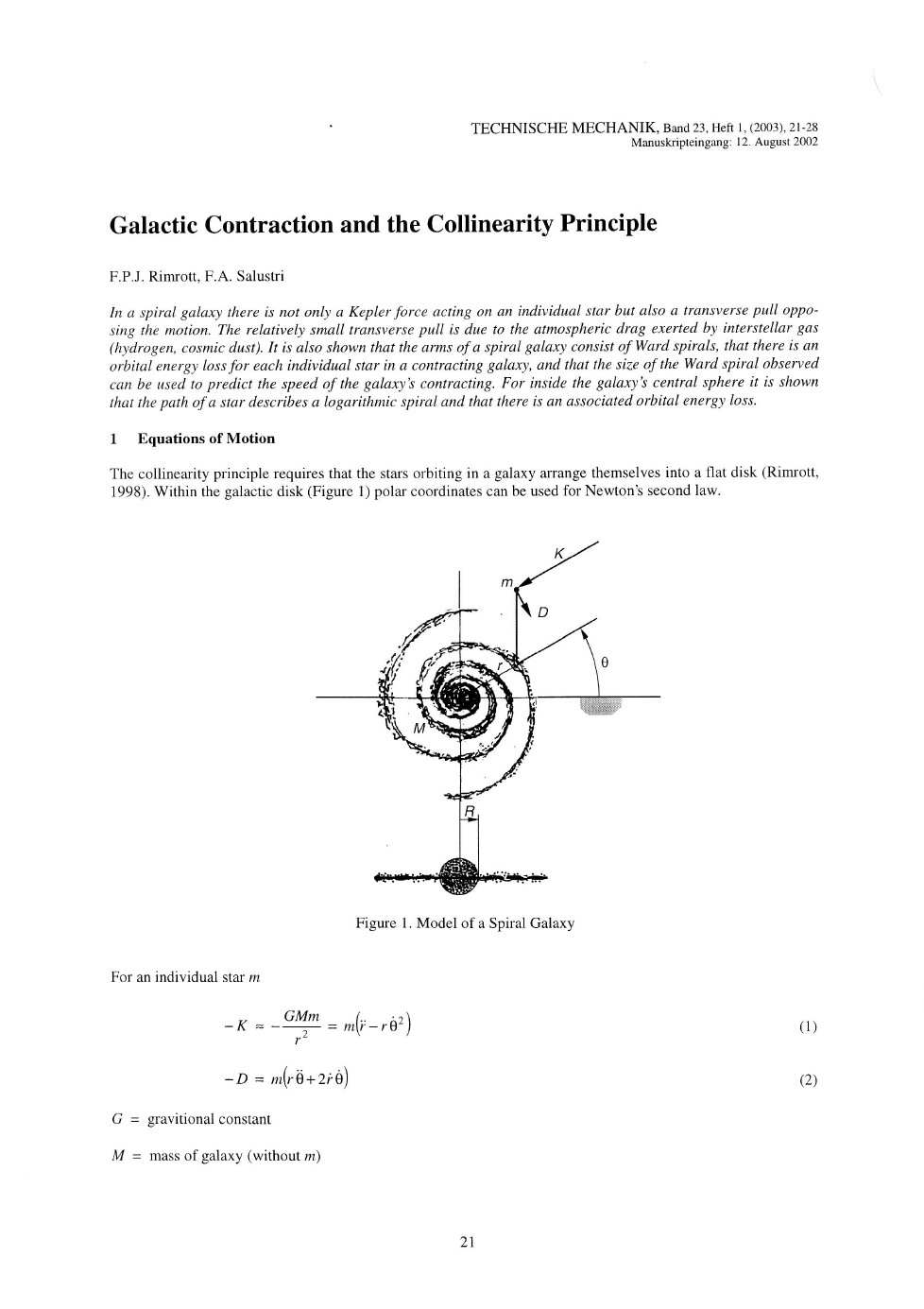Galactic Contraction and the Collinearity Principle
Abstract
In a spiral galaxy there is not only a Kepler force acting on an individual star but also a transverse pail opposing the motion. The relatively small transverse pall is due to the atmospheric drag exerted by interstellar gas (hydrogen, cosmic dust). It is also shown that the arms of a spiral galaxy consist of Ward spirals, that there is an orbital energy loss for each individual star in a contracting galaxy, and that the size of the Ward spiral observed can be used to predict the speed of the galaxy’s contracting. For inside the galaxy’s central sphere it is shown that the path of a star describes a logarithmic spiral and that there is an associated orbital energy loss.





